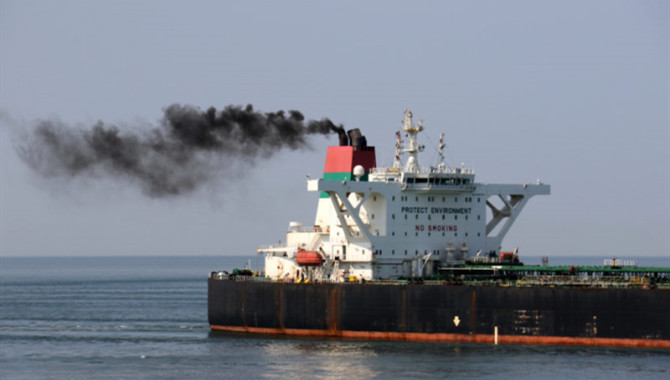
The implementation of low sulfur bunker fuel regulations on January 1 could result in changed market structures for clean and dirty tankers in 2020 as a result of compliance choice, as sources contemplate the possible emergence of multi-tiered pricing, specialized routes, and bunker availability issues.
Roughly 17% of the tanker fleet is expected to be installed with scrubbers by the end of 2021 to comply with the International Maritime Association’s 0.5% sulfur bunker fuel specifications, according to S&P Global Platts Analytics, enabling those ships to run lower-cost high sulfur bunker fuel.
As a result, according to market sources, charterers may ask for discounted freight on those scrubber-fitted vessels. However, the verdict is still out on whether a two-tier spot market will emerge.
“That’s the question of the hour,” a shipbroker said.
Tankers opting to use scrubbers will save on bunker costs when buying high sulfur fuel, with 0.5% sulfur bunkers fetching a price premium to high-sulfur bunkers in the ex-wharf Houston market, according to S&P Global Platts data. The 0.5% premium has averaged $225/mt so far in December, up from $151/mt in July.
Some sources think scrubberized tonnage could set the floor in weak markets, especially when vessel availability is oversaturated in any given region.
“I feel the larger fleets [with scrubbers] are going to do what they already do now with so many ships, just fix whatever they can. I suppose if there was an oversupply of ships, they could [go lower],” a shipowner said.
INVESTMENT COST SUPPORTS SINGLE-TIER
Still, while scrubberized ships can run lower-priced bunker fuel, owners have factored in the purchasing and installation costs of the scrubber system into their calculations, which could keep freight rates on par with non-scrubberized vessels.
“Over the course of X years they will pay less in bunkers, but they have had spent some major cash on scrubbers, so somehow you need to make that money up,” a second shipbroker said.
Americas dirty tanker owners are optimistic they can to book both scrubberized and non-scrubberized tonnage at parity with one another into the long term.
Two-tiered pricing has been seen in the time charter markets, but with charterers paying premiums for ships fitted with scrubbers, as charterers pay for fuel in time charter deals, whereas in spot trades ship owners assume the bunker fuel costs.
One-year time charter rates for scrubberized tonnage was last talked at a $4,000-$5,000/d premium for VLCCs and $1,000-$1,500/d premium for Medium Range tankers to ships compliant with low sulfur fuels, VLSFO or MGO.
It is worth the additional cost to fix scrubberized ships, assuming the low sulfur bunker fuels continue at a minimum $200/mt premium to high sulfur.
‘SCRUBBER RUNS’
Market participants more heavily vested in scrubbers foresee the emergence of specialized “scrubber runs” in 2020.
Tankers with scrubbers would best optimize the use of cheaper HSFO on long-haul routes, such as the US Gulf Coast to Asia route, according to some clean tanker owners. Meanwhile, older “gas guzzler” tankers are more likely to be positioned on short-haul voyages or those with lots of demurrage expected.
Yet the question is whether those clean tanker owners vested with 50% to 90% of their tonnage in scrubbers can keep to clearly segregated scrubber trade routes.
The dirty tanker market has a clearer direction on which routes will see the highest amount of scrubber activity. Larger-tonnaged VLCCs and Suezmaxes are the largest recipients of scrubber installations due to their position as the dominant ship class in the long-haul trade. The percentage of scrubberized ships in each class grows in line with tonnage size, with 32% of VLCCs, 26.4% of Suezmaxes, and 17.1% of Aframaxes, according to Platts Analytics.
Medium Range clean products tankers are expected to have just 11% of their entire tonnage scrubberized by the end of 2021.
“When positioning ships with scrubbers, you want to monetize the investment, and longer-haul voyages make more sense in order to do that. However you have to factor in if they will have high-sulfur bunkers where you’re going,” a second shipowner said.
BUNKER AVAILABILITY
Shipowners have already faced delays in finding low sulfur bunkers in Brazil and Panama, with longer voyages and later laycans requiring more forward-looking bunkering schedules. Mexico is unlikely to have low-sulfur bunkers available anytime soon, as the country has not signed onto the IMO mandate and infrastructure at the ports appears limited.
HSFO availability in the Americas appears to also be compromised with the bunker industry largely switching their storage and delivery system to low sulfur fuels, challenging scrubberized tonnage to capture the full benefit of the sulfur spread.
“Depending on the specific trade and segment, this can introduce notable complexity on bunker logistics and delivered cost for HSFO, with adverse impact on realized TCEs (time charter equivalents) for those who choose to rely on it,” a third shipowner said.
Source:Platts
The opinions expressed herein are the author's and not necessarily those of The Xinde Marine News.
Please Contact Us at:
admin@xindemarine.com


 Ningbo Containerized Freight Index Weekly Commentar
Ningbo Containerized Freight Index Weekly Commentar  Ningbo Containerized Freight Index Weekly Commentar
Ningbo Containerized Freight Index Weekly Commentar  Ningbo Containerized Freight Index Weekly Commentar
Ningbo Containerized Freight Index Weekly Commentar  BIMCO Shipping Number of the Week: Bulker newbuildi
BIMCO Shipping Number of the Week: Bulker newbuildi  Ningbo Containerized Freight Index Weekly Commentar
Ningbo Containerized Freight Index Weekly Commentar  Ningbo Containerized Freight Index Weekly Commentar
Ningbo Containerized Freight Index Weekly Commentar